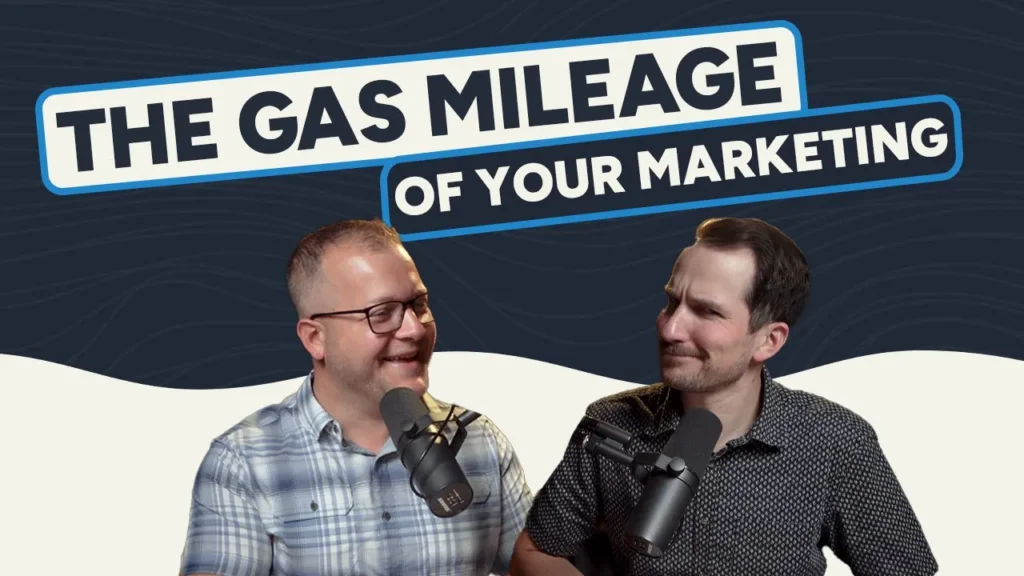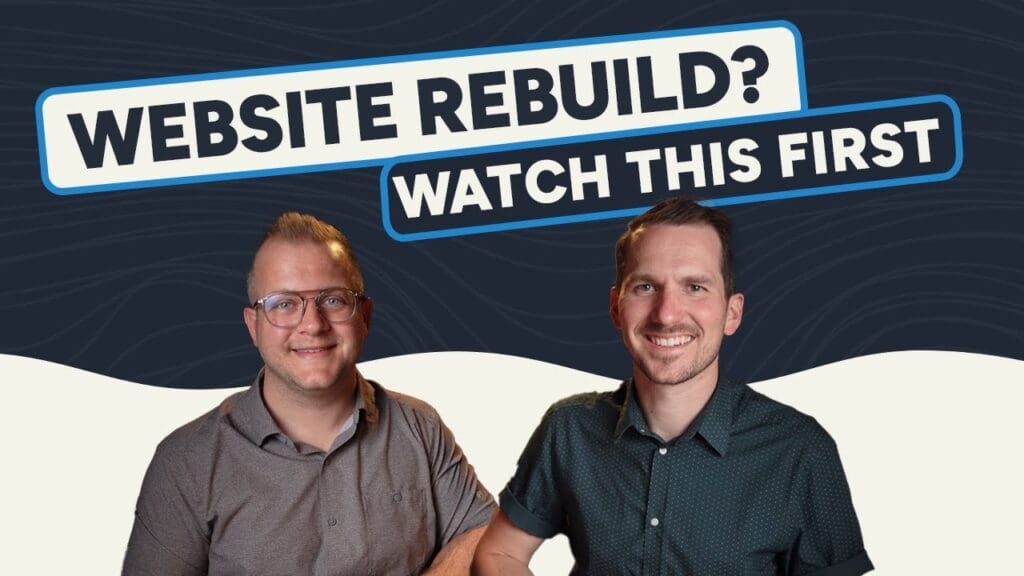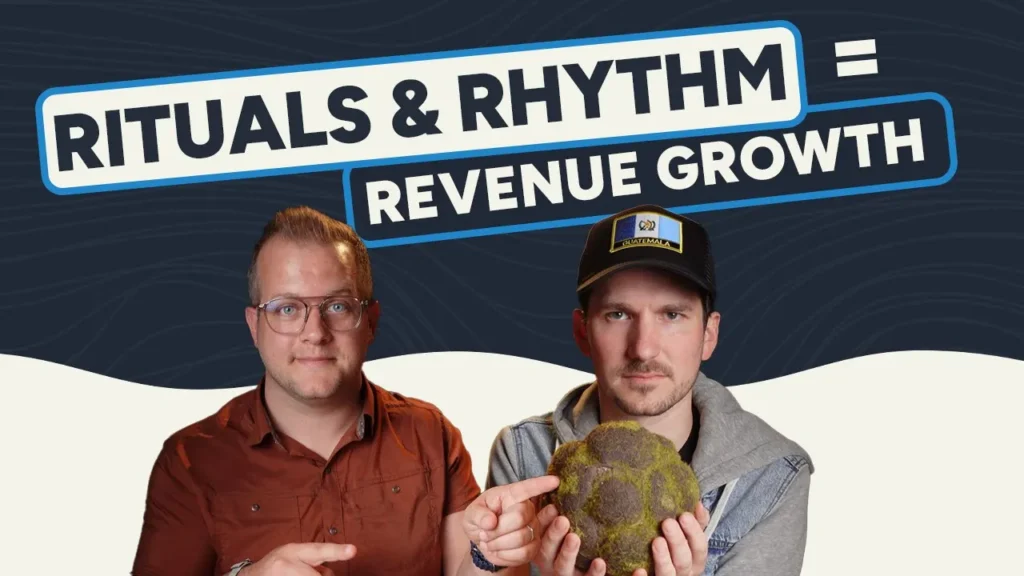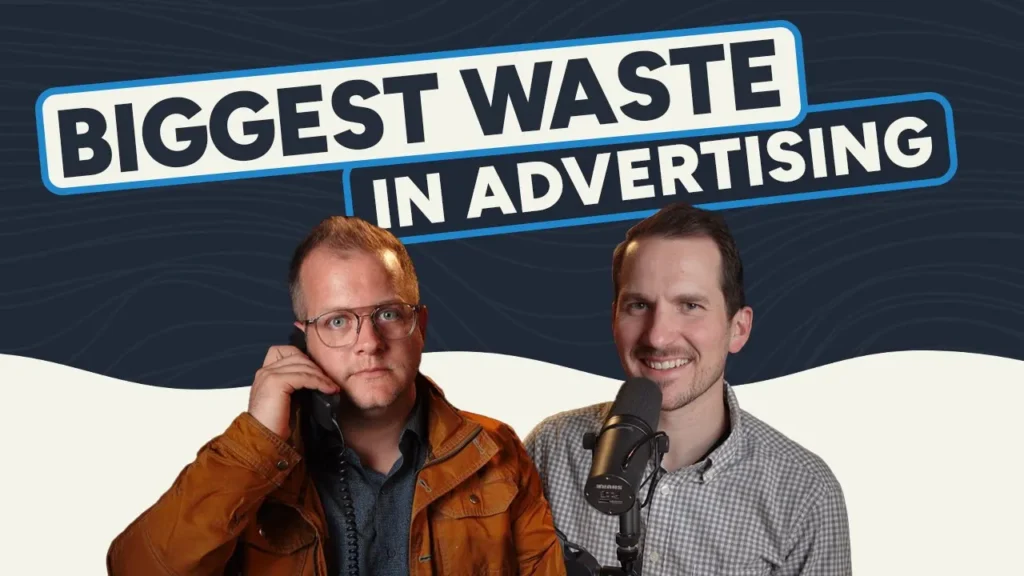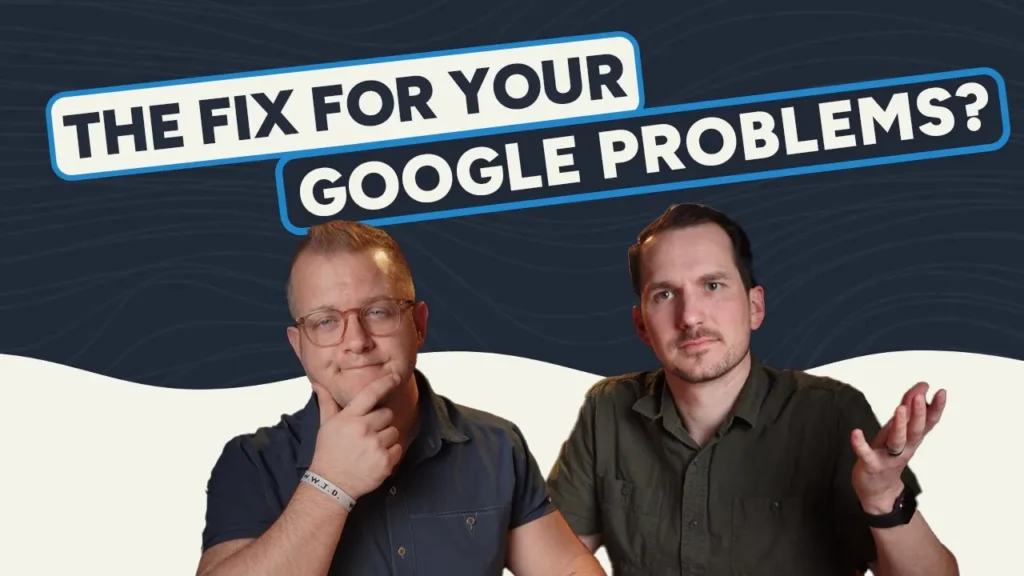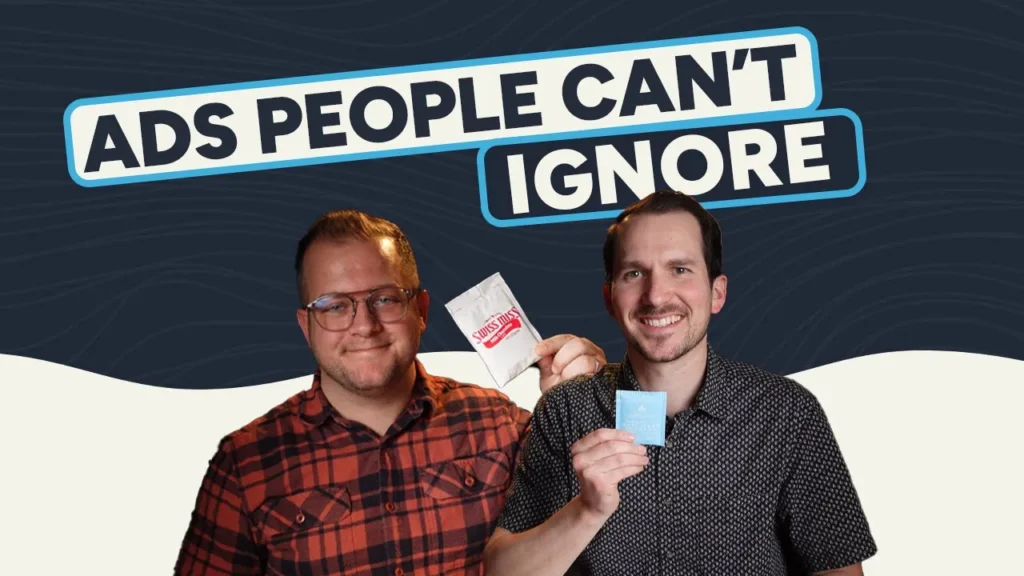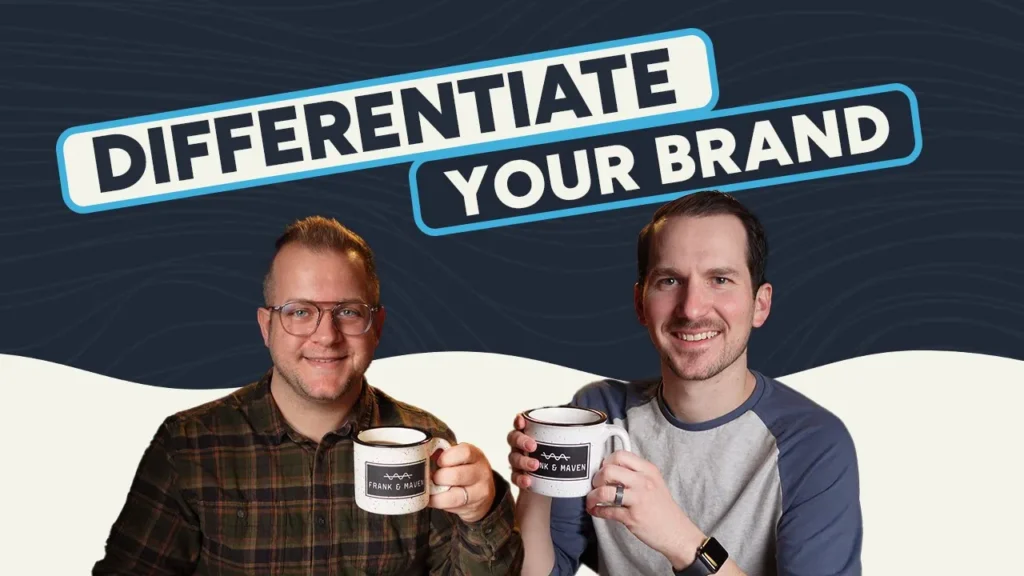How To Get The Best Deal on TV & Radio Advertising (Part 1)

Your phone rings. Your door gets knocked. Your email inbox is full to the brim with…
Advertising Sales folks!
They all want the best for you. They have big ideas for growing your company.
But your budget simply won’t support them all.
So how do you choose the right one?
How do you get the best deal?
Brandon and special guest Megan Ellis share their top tactics for negotiating media over the last decade and some simple moves you can make to get the most for your money.
This episode will save (and make) you BIG money.
Don’t miss it!
00:00 Teaser
00:30 Intro
01:40 Today’s Question / Today’s Co-Host!
03:20 How do you get the best deal on advertising?
04:25 The Negotiation Process
05:30 The Ultimate Goal of Media Buying
09:00 The Numbers and Jargon You Need to Know
13:20 Being Consistent with TV
16:00 Being Consistent with Radio
17:45 If You Don’t Have a Media Buyer
This Episode Hosted by:
Recent Episodes:
What Are CPMs? The Gas Mileage of Your Marketing
Rituals & Rhythm = Revenue Growth
Get New Episodes In Your Inbox:
We'll be back every Monday answering your real life marketing questions!
Listen to Audio Only:
Keep Sharpening Your Marketing Skills With The Maven Marketing Podcast
What Are CPMs? The Gas Mileage of Your Marketing
CPMs are the great equalizer of marketing media. To make great decisions, you need to know how…
Rituals & Rhythm = Revenue Growth
Culture eats strategy for breakfast—and in this episode, Brandon Welch and Caleb Agee show you why rhythm…
The Single Biggest Waste In Advertising
You might think the biggest waste in advertising is bad creative, weak targeting, or outdated platforms. But…
IDKWNTHTB – Keep Showing Up!
Every business owner hits the wall. You launch the campaign, tweak the copy, show up every week—and…
Stop asking, “How did you hear about us?” (do this instead)
It’s lurking… tucked into a form on your website or maybe it’s a part of your sales…
IDK Who Needs To Hear This But: You Need To Fill One Glass At A Time
FREE MARKETING AUDIT: MavenMarketingAudit.com Get a copy of our Best-Selling Book, The Maven Marketer Here: https://a.co/d/1clpm8a Our…
How to Immediately Differentiate Your Brand
There are no more unique value propositions. You could invent the next big thing and you’ll have…
Brandon Welch 0:00
Your best chance at influencing the same human beings and your media, growing in efficiency like a snowball and getting more and more impactful over time, is to pick the same audience that comes back to the same program every day. This is for your core I’m not saying you can’t buy certain things outside of this at certain times. Thank you for that nuance. Yeah, yes, that is a nuance, right? But you want to buy the same Think, think something really boring, the same, you know, 12pm news program every day, exactly.
Welcome to the Maven Marketing Podcast. Today is Maven Monday. I’m your host, Brandon Welch, and I’m joined by my co host, Megan Ellis, aka the Mego Mom, this is Megan’s first podcast with us. Megan, are we? Megan, you nervous?
Megan Ellis 0:51
No, but thank you so much for having me
Brandon Welch 0:54
Seriously, though, this is not your first time in show business. Is it?
Megan Ellis 0:57
No, no. Many, many moons ago, I spent a lot of time on stage doing musicals in my early 20s.
Brandon Welch 1:05
You’ve done a few commercials as well, too, a few maybe for a local convenience store or something like, Okay, this is obviously show business. So what? What could go wrong? So this is also the place where we answer your real life marketing questions to help you eliminate waste and advertising, grow your business and achieve the big dream, the big dream. Megan, welcome to the podcast, and we are talking about our big dreamers as it relates to media and 2024 Why are you here today? What is the question that you seek to answer
Megan Ellis 1:40
our question of the week comes from every business owner in America. It is, how do I get the very best deal on advertising next year in 2024?
Brandon Welch 1:50
best deal on advertising in 2024 the best deal. And why might you be qualified to speak on how to get the best deal? What do you do around here?
Megan Ellis 1:59
Well, I try to get our clients the very best deal possible.
Brandon Welch 2:03
She tries and she succeeds. I’ve never seen her miss. Megan has negotiated and audited and managed 10s of millions of dollars in advertising. We’ve had the awesome fun of working together for over a decade, and I first admired Megan’s craft just kind of early in my career, definitely early in both of our careers, and she has this undying sense of frugality and like,
Megan Ellis 2:28
I’m cheap. I’m cheap, guys, it’s
Brandon Welch 2:30
a fancy way to say cheap and scrutiny. Like, yeah, why should I buy this? And it didn’t matter if it’s a pair of shoes or, like, a million dollar advertising budget when it comes to other people’s money, I’ve seen her hundreds of times, treat it just like her own. She’s always asking, Why should I spend that? Wait, why does it cost that? And so her curiosity and her tenacity, and then that experience of buying and gosh, well, over 30 markets that I can think of, our clients and many others over the years, she’s someone you definitely need to know when it comes to know when it comes to getting the best deal. And so she is Chief media buyer on our team and a marketing consultant, and I’m just glad to have her here today. So just answer the question for us and get it out of the way, how do people get the best deal on advertising?
Megan Ellis 3:17
Well, first I want to say thank you for saying all those super kind things about me. You are amazing. I appreciate all that.
Brandon Welch 3:24
You hear that Nate the camera guy?
Megan Ellis 3:24
This is something that- I don’t take this, this job lightly, because, like you said, this is these are small business owners, and they’re spending a lot of money, and they’re trusting me to make the right choice and to, you know, manage all of this money, and so I take it very seriously. And so today, while we’re talking about this topic, I just want to separate into two different categories. One is how to negotiate upfront, and then the other is how to manage while you’re spending.
Brandon Welch 3:57
Negotiate upfront and manage while you’re spending. I’m glad you said that, because there really are two sides to media buying. I’ve been on the both sides of the equation, buying, selling, and then actually as the advertiser. So the third person right? We’ve been agency, and then we grew up selling ads. And I think what a lot of people think they’re getting the best deal, like, what’s the best deal? They’re thinking the cheapest, or the cheapest cost per ad, or how much, how little can I spend to get a result? And so I think it’s important to break down that what we are buying and why. So you mentioned the first is the negotiation process. Yes, tell us what that means to you and maybe to our method here. Okay,
Megan Ellis 4:36
yeah, so the negotiating process, it is. It’s tough, because here’s the thing, as you and I both know every single media has an audience. They all do, whether it’s the smallest radio station in the smallest you know town in America or the biggest every single place has listeners. And so we know that. We know that already. So we. Put a ton of effort into selecting the very right media partner for the business in each market. When you say partner, what are you what are you talking about? I’m talking about the station that we choose to work with, the station that we choose to place our, you know, television ads on, or radio ads on. We typically go with one. I’ll we’ll talk more about that later on. But, we, we want to get it right the first time, you know, and so we spend a lot of time figuring that out. And, yeah, you know, when we’re talking about things like TV, radio, billboards, we’re trying to earn that tomorrow customer, like you talk about in the main tomorrow customer, where the world you read about that there’s a little Maven method. So, you know, a couple of reminders from the best tomorrow marketing strategies. I kind of want to go over some of those, if I can. We’re looking to buy the biggest group of people that we can afford to reach daily.
Brandon Welch 5:54
Yeah. So you want to two keywords. Biggest group is one. Everybody thinks, oh, yeah, big audience. I get that. But afford to reach daily, daily, yeah, so sometimes there’s a much bigger group than you can afford to reach often enough to build that influence. And so when we’re talking about tomorrow customers, we’re building this snowball effect that people know, like and trust you before the sale. And to do that in most categories, that takes consistency over time, unless you’re selling like cheeseburgers or an event or a concert or something, people can take a while to make a decision to buy a new washing machine or a new roof, or select an attorney or choose medical providers and
Megan Ellis 6:30
and that’s just it. Because we are trying to be known, liked and trusted with the same, you know, the same person, day after day. And so if you’re anything like me, you try to sleep every night. You forget you’ve got a million things going on. That’s why it’s important to show up consistently and then that so
Brandon Welch 6:47
the biggest stations in town will often come in and say, We’re the biggest and best, right? And give us your money. And you’re like, Well, I was, I can only afford to be on a couple few times a week absolutely random places, and it’s very important as a foundational like, before we talk about negotiating, I think your goal, above all, is to reach them at an appropriate amount of frequency, and then from there, the biggest audience you can afford to do that right,
Megan Ellis 7:08
absolutely. So you know, like he said, that that requires consistency. And that’s one of these other things, is that we really, really, really, we really prefer to buy 52 week schedules. That means every single week of the year. What about if it’s Christmas, even if it’s Christmas, what about if it’s Valentine’s Day, even if it’s Valentine’s Day snowing, especially if it’s snowing, yeah? I mean, for sure, if it’s snowing, why you want to be well, it’s just important to be there every single day. But also, people are inside, yeah, you would buy whether
Brandon Welch 7:38
it’s middle of summer, middle of winter, right? And that consistency showing up with those people paired with a good message, paired with a good brand personality, of which we’ve all done great episodes on, you should check them out. We’ll put them in the link in the comments. Yeah, that builds this familiarity factor that people know and like you and trust you long before they have the washing machine break and go, Holy smokes, I need a washing
Megan Ellis 7:59
machine, right, right, right. So that means that, you know, before we buy these audiences, we are extremely clear on our business strategy and the message all the best media buying in the world. It won’t save a bad strategy or a poor message,
Brandon Welch 8:17
yeah. So get your strategy right, get your message right, and then by the media that is foundational to the Maven method. You guys know, if you’ve listened to this podcast for more than a minute, you know that that’s the process and the order, but now we’ve got an awesome strategy. We know our business outcomes. We have spent time obsessing over the human beings and what they need to have in their life and how we need to speak to them. Now it’s time to buy the media. So give us your like, just down and dirty tips for negotiating that best rate and that best schedule.
Megan Ellis 8:46
Okay, so like I said, the goal is to negotiate find the best partner or partners that you can commit to long term. It’s not jumping around monthly to buy the cheapest spot or anything like that. So we’re gonna negotiate based on the size of the audience, and what we have to pay for that size of audience. So we measure that, and actually two in two different numbers. There’s one is the cost per rating point, and then the other is the cost per 1000s of people, cost per 1000
Brandon Welch 9:15
Okay, let’s break that down for a second. Okay, the average person probably doesn’t know what a rating point is. We probably hear that, ooh, it’s got highest rated show or whatever, really quickly, just to demystify that, one rating point is one percentage of the audience you’re talking about. So if it’s adults 35 to 64 if the program scored a one rating, that means that 1% of all of the 35 to 64 year olds in that area watched it an audience of that size, it’s measuring essentially the same thing as 1000s of people. Just 1000s are easier to talk about because we know the number of 1000 people, we can imagine that. So cost per 1000 is just a different way to divide out that audience. For the sake of this episode, and just for simplicity, you can ask your station, whoever’s trying to sell you advertising to give you. Do in either form of measurement, and both, and both like they’re really measuring the same thing. It’s just the amount of people, but ask for how many 1000s of people watch that program? And so it’s just a basic measure of efficiency. You’re dividing what you had to pay versus how many 1000s of people are watching it.
Megan Ellis 10:17
Exactly, right? Exactly. So what you’re going to want to do first in the negotiating process, if you’re going to embark on this journey, is you want to request the same information from all stations. That’s really, really important, because you’re dealing with sales people, and sales people are really good at showing you know the best strengths
Brandon Welch 10:36
of their product, exactly. God bless them for doing that exactly. Yeah, that’s, that’s their job. And so you’re asking for a consistent, hey, I want last year’s. I want to take the whole year of rating measurement. I want you to tell me how many 1000s of people on average watch these programs per exposure. And then I’m gonna divide that by the cost you’re going to pay me this year, right? That, right? That’s exactly it. So you’re getting those, they’ll be on all different sorts of like looking paper, but you’re getting down to that. What is the cost per 1000 of this program? That’s a really good way to measure what you’re getting. Yes,
Megan Ellis 11:07
always look at cost per 1000. You want to request the same information from the same stations. That requires the number of people each station reaches at different hours or programs of the day, and
Brandon Welch 11:18
every every hour has different sized audience. Yes. Programs pull big audiences. Certain programs pull small audiences. Yep.
Megan Ellis 11:24
And the cost to run a spot at those times of the day, or in those programs of the day, it’s
Brandon Welch 11:29
radio obviously, six to 9am people driving to work, that’s a bigger audience time right middle of the day, and most stations less drive time. So you’re saying in those same hours, and you can ask they’re called standard day parts. So just ask the station rep for CPM for the standard day part, and then they’ll give you, okay, here’s six to nine. What our cost per unit is. Here’s, you know, 10 to two. And, you know, there’s different ranges, right? So ton of nerdy stuff we could go in there. But for the average business owner, you’re just printing out every program and saying, What am I paying here? Because here’s, here’s the real danger. If you’re going, ooh, you know, this station is charging $1,000 for a spot, or $1,000 a week on the radio station, or whatever, you’re going, dang, That sounds expensive. That’s outrageous, right? But you might learn that that $1,000 buys you exposure to 100,000 people. And you might another station might be going, well, we’ll sell to you for 200 and you’re thinking, that’s an awesome rate. That’s a lot better than 1000 but you might learn that that station is only reaching 10,000 people for that $200 so in the $1,000 spot example, you were paying $10 cost per 1000. Cost you $10 to reach 1000 people, essentially. And the other quote, unquote cheaper rate. You’re paying $20 cost per 1000, so you’d be paying double to reach the same amount of people. And so that’s that balance part. Um, some budgets just aren’t going to be able to afford that $1,000 spot three times a week for 52 weeks. So you you start there, but then you go back to say, can I fit the frequency goals? Can I be on which we’re going to talk about in just a second. Yeah. But key is measured against the 1000s of people. Media, in general is a commodity. So how many people are watching and what I have to pay to reach those people per person?
Megan Ellis 13:13
Yep. So when you’re doing the math, you’re also balancing how many times you can afford to be in front of this audience, like you said, the minimums you want to stick to. So I’m going to so I’m going to give you some numbers. Okay, um, here’s a couple of ways that I stay in the parameters of what I’m trying to work with here, no less than three times per week in one program on TV. Okay, so
Brandon Welch 13:35
let’s just stop that. Was a big statement, a big statement. Um, quick, foundational thing on in TV. If your goal is to become well known, liked and trusted and build the most rapport with an audience, you generally want to be buying the same programs. It sounds fun and fancy to jump around and be on maybe, you know the success this morning today, yeah, HGTV day, and then, you know, true TV tomorrow night? Yeah, we had this, like, like, as advertisers, we get excited because it feels like we’re gonna be everywhere, right, right? But really, your best chance at influencing the same human beings and your media growing in efficiency like a snowball and getting more and more impactful over time, is to pick the same audience that comes back to the same program every day. This is for your core. I’m not saying you can’t buy certain things outside of this at certain times. Thank you for that nuance. Yeah, yes, that is a nuance, right? But you want to buy the same Think, think something really boring, the same, you know, 12pm news program every day exactly, or the same, 5pm news program every day. And to start out, you pick your most efficient program, or the one you think is going to fit your audience the best, and you go, okay, minimum three times per week, times 52 weeks. And then multiply that times the rate you have to pay, and that’s your that’s what you’re paying to be in that program, if you got budget left over, probably add spots four and five to that same program, or at least up to the four point, right? And then you’re saying, after I’ve got that. Build. Do I have money left over cool? I’ll pick my next program, versus trying to be all over the place and a lot of media reps with really good intentions, build these really complex schedules that are like, you know, one week here, one week here, because I think it makes you feel like you’re in a lot of places. But the truth is, you’re not. Because if you’re not in front of people, the average person sees 5000 ads per day, right? You’re not in front of them daily, or at least every other day. You’re not building that sticky factors. And
Megan Ellis 15:28
the cool thing is is, you know, people tend to be creatures of habit, so you’re driving by the same billboards, you’re listening to the same radio station, you’re watching the same, you know, news program. You’re consuming your news in the same way. You’re checking Twitter every morning, you’re bet Nate
Brandon Welch 15:41
the camera guy brushes his teeth about the same time every day. There you go. I bet he drives the same route to work. I bet he sees the same billboards. Maybe, maybe he switches it up,
Megan Ellis 15:49
I don’t know, but I bet
Brandon Welch 15:50
he stops at the same stop lights. I bet his blinkers on for the exact same amount of time. There you go, on average per day. So let’s
Megan Ellis 15:56
talk about, well, let’s talk about time spent in the car. Let’s talk about radio. Okay, so,
Brandon Welch 15:59
it’s three times per program per week per TV. For TV, minimum, if you can’t afford that program, three times a week, 52 weeks, buy a cheaper
Megan Ellis 16:07
program, exactly, or a smaller station, or smaller station, right? The place that you the place that you can afford to be right
Brandon Welch 16:15
consistently. Yeah, so radio, what’s our minimum frequency for radio? Yes,
Megan Ellis 16:19
this is tough. It’s no for me. This is what. This is how I found my winning combination no less than 40 spots on the radio station between the hours of six A, 7p Monday through Friday. Okay, you want to go for 40 spots per week.
Brandon Welch 16:35
So you’re averaging eight spots a day between six A and 7p um. Radio, you tend to buy in weekly frequencies versus per program, because it’s a smaller audience on radio and it takes more exposures to reach that full listenership. So 40 spots a week. So multiply your rate 35 to 40. Yep, if the rates are, you know, $20 a piece and you’re buying 40 a week. That’s $800 a week times 52 weeks, is somewhere around the neighborhood $40,000 or more. That’s your annual budget. And you’re going, am I gonna spend that this year, or can I not afford that? And if you can’t afford that, just flat out, buy a smaller radio station. If you’re going, my budget’s three times that much. Maybe buy a more expensive, you know, radio station and then backfill with a smaller one for your extra budget. So yeah,
Megan Ellis 17:24
if you can’t afford that level of frequency every week of the year, pick cheaper programs, regardless of if they’re less efficient.
Brandon Welch 17:33
Yes, so efficiency, that thing we talked about, is good. You should rank them. But even if you got a super expensive, really efficient program you might be buying the second or third down that list to ensure you can reach the frequency. There you go. So we got all that math out of the way, and I promise that’s as dorky as we’re gonna get for you guys today, that’s as pretty maybe rewind that and listen to it on half. Oh no, or send us a question if there’s something that we just didn’t properly articulate there.
Megan Ellis 18:06
But you can certainly get in the weeds on this stuff. Yes, you know, you really can. And that’s why, if you’re doing this on your own and you’re not working with the media buyer, I’ve got some tips for you on how to how to make this happen. Love it. Okay. You want to hear Bring it on. You want to hear a couple. Okay, bring it on. So one is, you want to commit early. So let’s say you are again embarking on this journey of doing some tomorrow type of advertising, and you’re ready to finally invest in a television station or a radio station, or that, that billboard, or whatever you really want to try to get that that commitment level that you’re comfortable with. You want to get that to the partner by the end of December, like, if you can get all of this laid out by the end of December, I promise you, this is going to work out better in your favor. And let me tell you why. I’ll tell you why, because this is how these media partners are getting compensated. And they love commitment, and so they are loyal to people who commit to them. They will take better care of you. You will be let’s talk about television in particular, if you put your schedule in, you know, by the end of the year, it’s we’re walking into a political year. Things are going to get crazy. You’re going to hear words like preemptions and political ads and all this stuff. And so your ad is going to be the last one to get kicked out, if you get this in early. So
Brandon Welch 19:28
talk about getting kicked out. We’re going into a political year. Talked about this a little bit last week. We were talking about, should we get off traditional meaning, go to digital? Oh, yeah. So great
Megan Ellis 19:38
episode. I think that was, that was a good one. You guys should look for
Brandon Welch 19:41
that. Yeah. So this thing about getting kicked out, the thing about broadcast advertising, be it TV, radio, even cable, and I mean even billboards, like there’s a finite amount of space, there’s only a certain amount of ad slots they’re gonna put in each program. And so let’s just say that’s 20, and let’s say. You’re number three in because you placed in November of 2023 for, you know, the year 24 you’re like the third one end of that 20 Well, stations are required to take to take more, to be fair to anybody. So right the way, if they fill all those 20 spots up, they have to give somebody else a chance to be in that program, but they can charge them sometimes double or triple what that rate is. Yeah, it can happen. There’s a there’s a thing called rate card, and there, usually there’s different tiers, yeah, yeah, 1234, and so when you’re negotiating annually, you’re buying, and you’re saying, Hey, I like my chances, because I’m planning this early, I’m going to buy at the lowest rate, and I’m going to lock that in for the entire year. Most stations will do that for you. So I’m locking in that rate for the entire year. And then I’m doing it early. So anybody who comes in and says, Ah, I’ll pay, you know, double that, well, you’re way down the list. Are the ones that get kicked out. So exactly the lowest rate locking in now even for next November, December. And I will say that’s really big and scary to say, Oh, I’m going to commit $100,000 to one station, the laws and rules and just, frankly, just good relationship management with your station. They will let you move it around. Something happens, and you get in a cash crunch or whatever, and you got to go, I got to pull back for July and something like that. I’m going to add it into August, September, my busy season, not the best plan, but you’re usually not contractually obligated to, like, that entire 12 months. There’s a there’s an opt out period you might have to pay for, you know, a month before they let you taper off. But most are good at honoring what the needs are. Yeah, because
Megan Ellis 21:36
that number’s scary. That sounds like a big, scary number, but Brandon saying there are definitely ways that you can work around that if crap hits the fan and you need to, but
Brandon Welch 21:45
for, for the love of like fairness and just good character, plan to spend what you know you can plan to spend, yes, and then you can add to it from there, yes, absolutely lock in the majority of your schedule, your core buy that 80% of your buy
Megan Ellis 22:01
early. Yep, there you go. And so here’s the other thing, whenever you’re a small business owner or even just my job, I get, I get overwhelmed with how many people try to get me to buy things every day. Oh, my goodness, because I’m kind of the gatekeeper for my clients. And so if you know, they run into Susie at the basketball game, like, oh, great, you should buy. You should buy from my radio station. They’ll say, Oh, I’d love to, but talk to Megan. She’s our gal, and she knows what we can and can’t spend. So they come to me and let me tell you, you cannot just buy from the person that you like the most. You have to have a very, very clear understanding of the market, of of the share of voice that that station represents. You have to know how many 1000s of people or hundreds of people that this advertising is going to reach. There is a lot of things that go into this. So don’t just buy from your favorite person or the person that has, you know, the Garth Brooks tickets or whatever you you really, yeah,
Brandon Welch 22:59
hold on. You had Garth Brooks tickets, nobody. You have my attention.
Megan Ellis 23:05
Listen, you have to buy off the numbers. You have to buy
Brandon Welch 23:08
man, that’s a real thing we’ve had. So that’s point number two, by the way, that was, that was my tip number two. Point number one is commit early. Point number two is buy on numbers, not necessarily relationships. Now, if the numbers are close, I will go with one I like better. I’ll go with the one that’s easier to deal with. And with. And some reps need to hear that that, because
Megan Ellis 23:25
at the end of the day, it is a commodity. And so sometimes we don’t actually go with the biggest station because they’re jerks. We know that everybody has an audience, and so that’s not always the winner. Don’t, don’t
Brandon Welch 23:37
be a jerk. Be likable, be serviceable. Be honest. Be honest about your station strengths, because we’re gonna find out. And the the big dreamers of the Maven Marketing Podcast are gonna find out if you’re lying, right, and so just be honest. Tell them when your competitors stronger in a certain area. Yes, love it. So buy on numbers. But I started on a different rabbit hole there, did ya? I don’t think so. Um, it was about Susie trying to sell
Megan Ellis 24:03
her oh, people, yeah, you can’t just, you can’t just buy from Oh, I was just like, we’ve had
Brandon Welch 24:07
people offer to give our clients cruises. Oh, yeah, and it’s, it’s usually the underdog. They know they’re weak, and they know they they’re afraid to show you the numbers, instead of embracing their numbers and saying, Yeah, I’m a small but you can afford to buy me really, really often. That’s the play for a smaller station, if you’re listening, we would buy off of that. By the way, we don’t always pick number one. We sometimes pick number three, if they’re better in that way, or that’s what our budget can allow. But they pull this smoke and mirror thing, and they try to give you all these freebies, and they get you emotionally excited. And you know, for that $5,000 the cruise cost, you could have put that in your pocket and bought your own cruise and then gotten, you know, 50% more media spend, so all that stuff. Okay, guys, this episode was getting long. Caleb was getting a little nervous, so we split it into two parts. We’ve covered how to. Shape your media upfront by planning early, negotiating on numbers, planning annually, asking for added value and knowing your posting standards. Go back and listen to that. There’s lots of stuff that will help you 510, to 20 years from now, buying media. Next week, we’re going to talk about managing the ad spend after it’s placed. Megan has some super cool tips, some insider stuff you’re going to want to hear. So tune in next week for part two. And then, you know what? After these are all pasted together, we’ll do a we’ll do a version where it’s the whole episode, if you want to just listen to it straight through, but we’ll be back here next Monday, and every Monday, answering your real life marketing questions, because marketers who can’t teach you why
Megan Ellis 25:40
are just a fancy lie. Talk to you guys next week.

